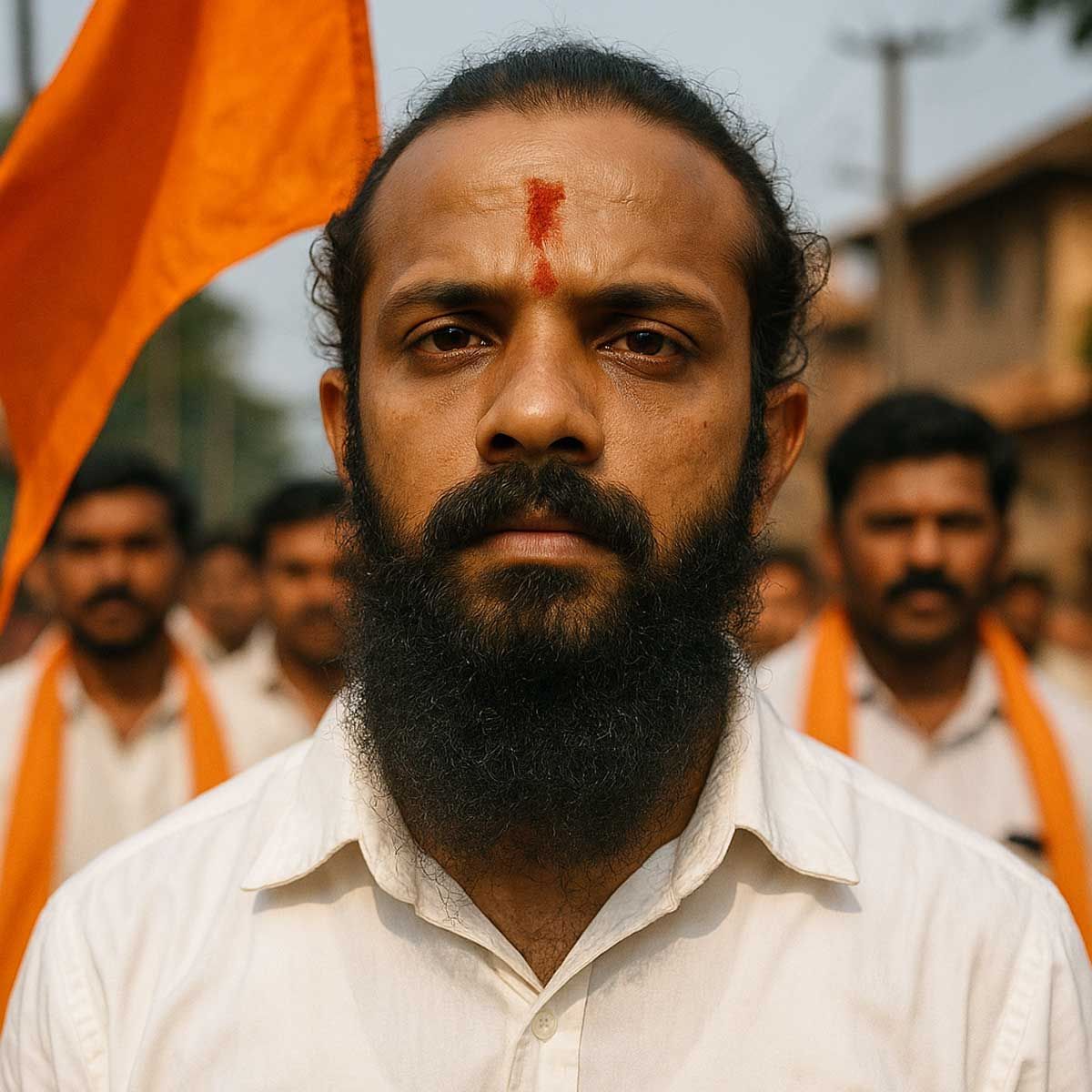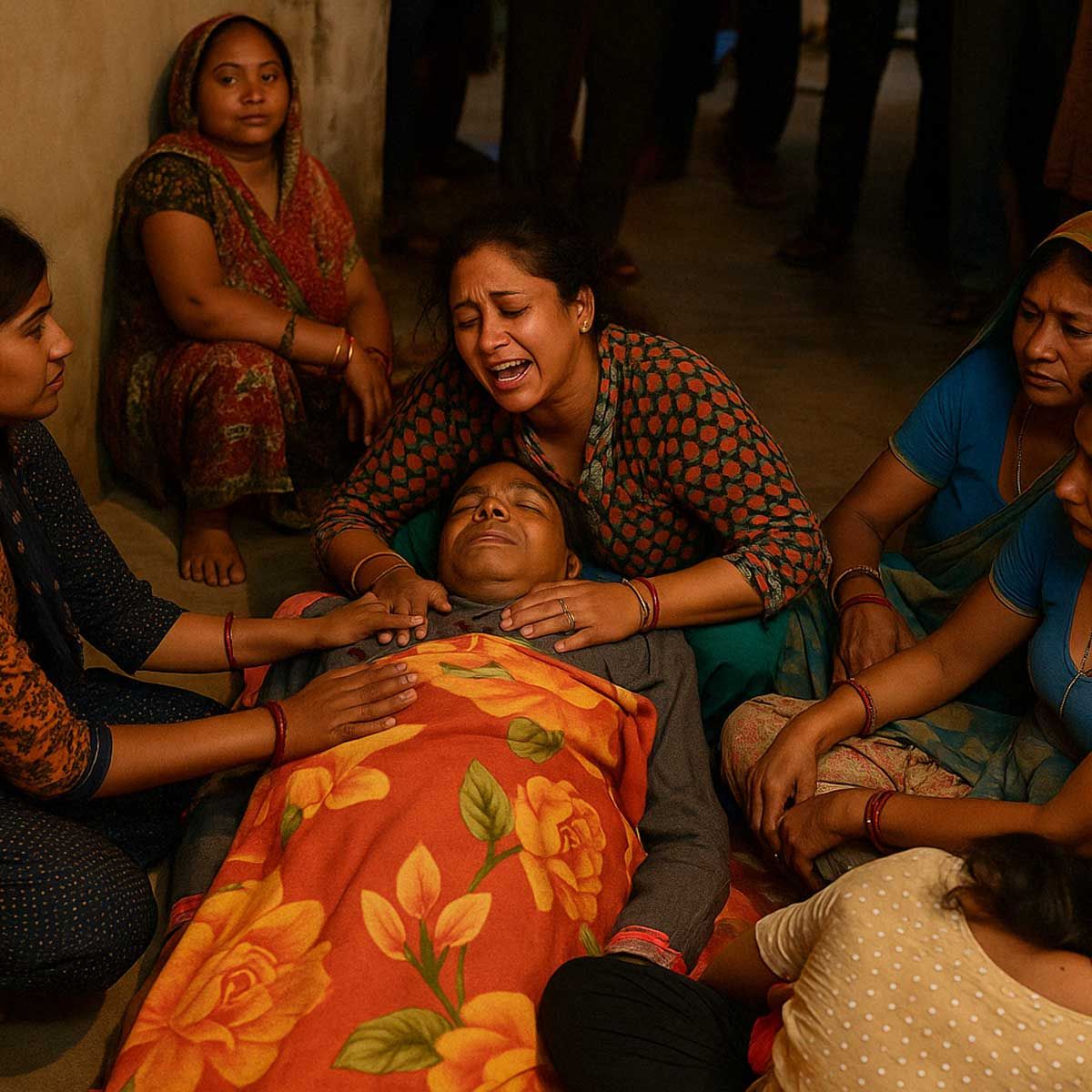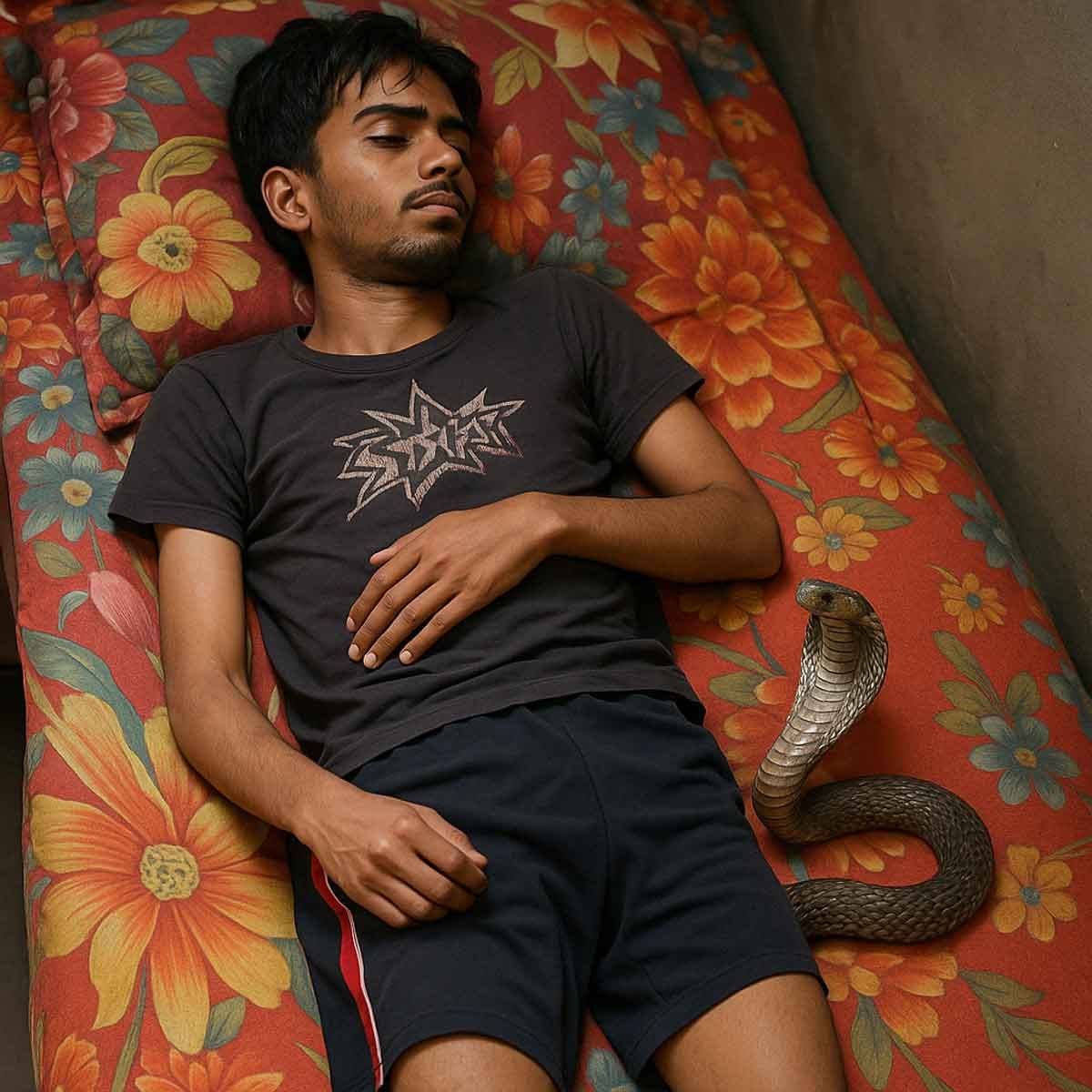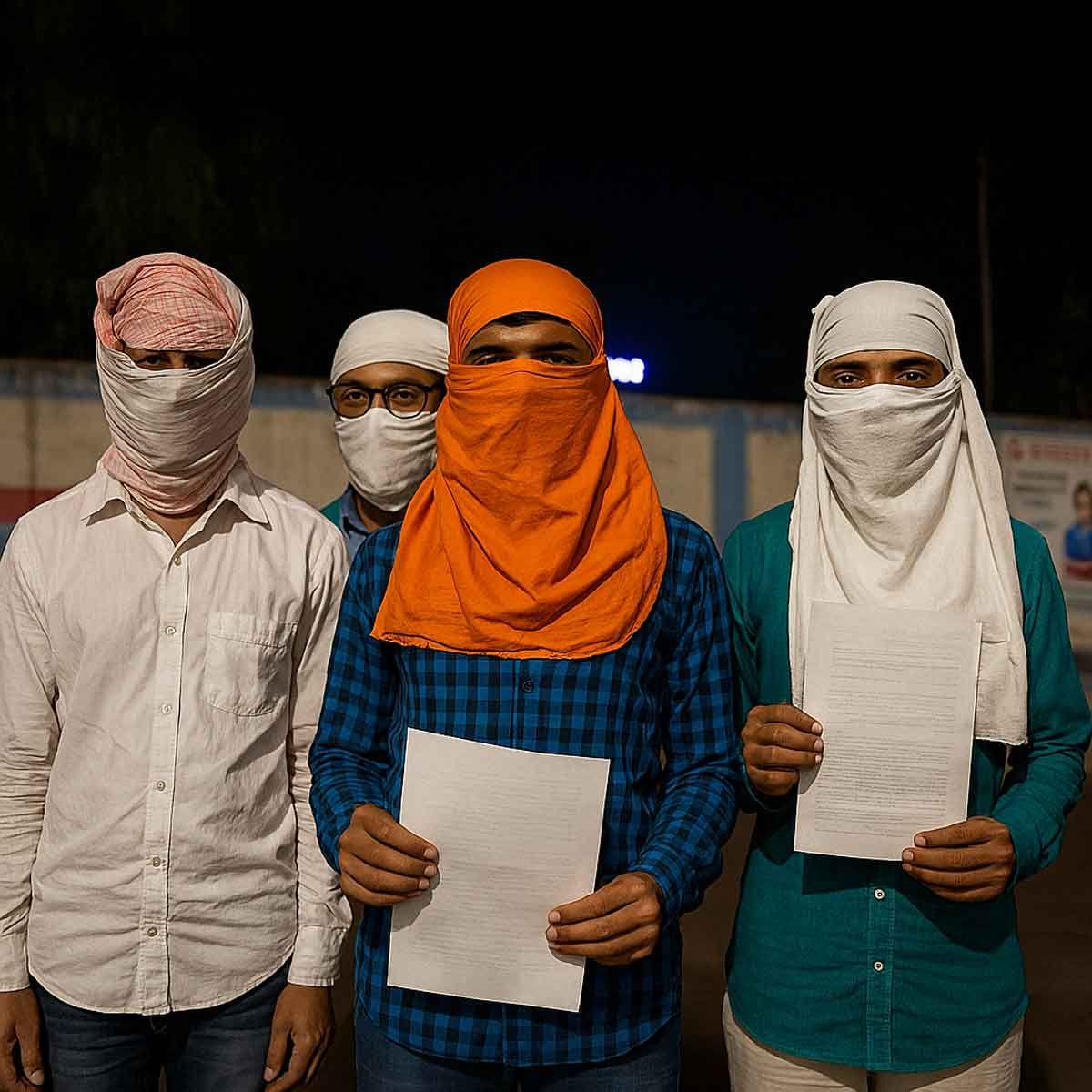More Coverage
Twitter Coverage
Satyaagrah
Written on
Satyaagrah
Written on
Satyaagrah
Written on
Satyaagrah
Written on
Satyaagrah
Written on
JOIN SATYAAGRAH SOCIAL MEDIA
"Sun had set, and nothing could break the wall": A 96-year-old Karsewika, who narrowly escaped a police bullet in Ayodhya, narrates how, when nothing could harm the wall, all started chanting Maruti Stotra; suddenly, a monkey appeared & the wall collapsed
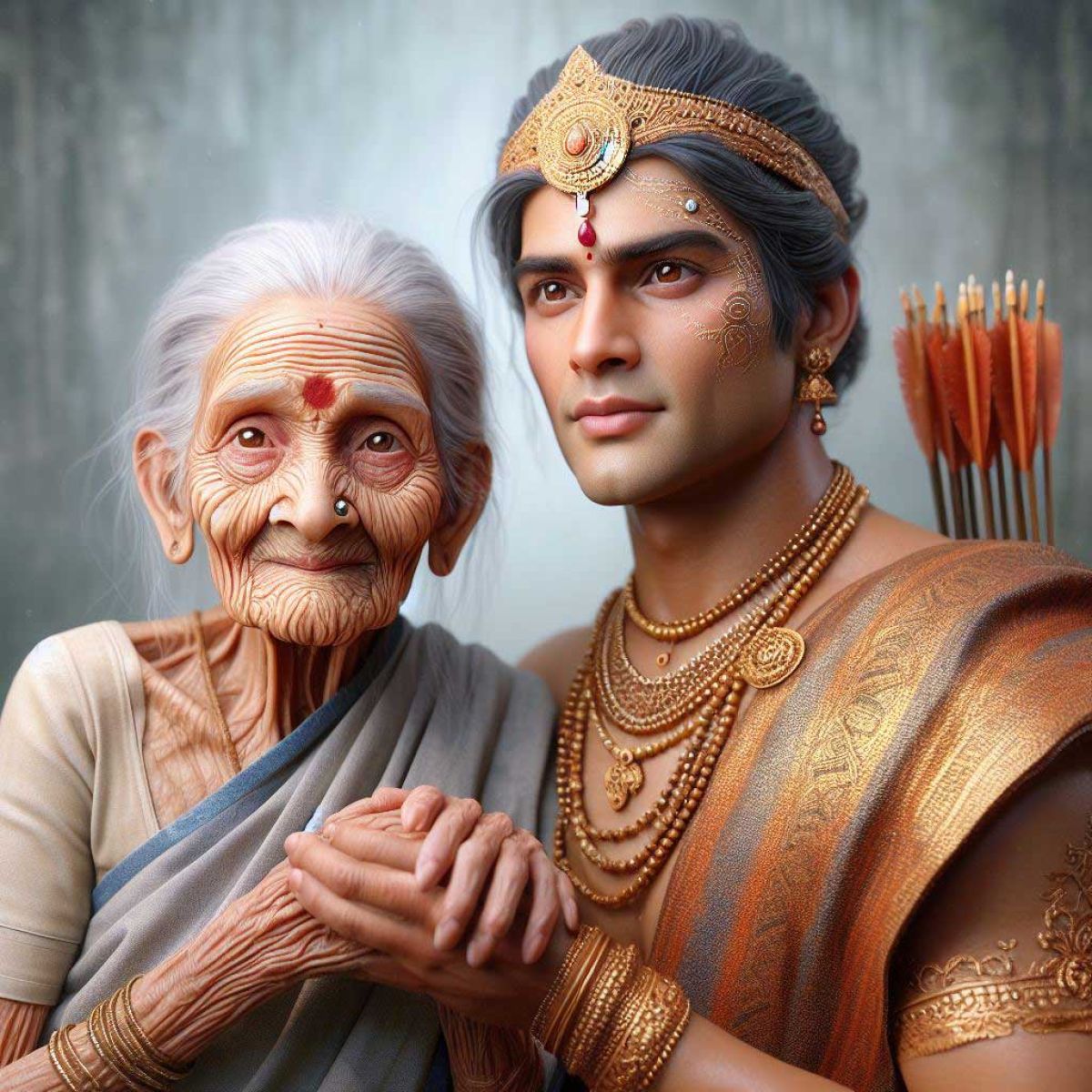
In less than two weeks, a momentous event is set to unfold in Ayodhya – the Pran Pratishtha of the Ram Mandir, a long-awaited and highly significant ceremony marking the installation of the deity Ram Lalla in his birthplace. This historic occasion is not just a day of religious significance but also a culmination of years of dedicated struggle by countless individuals. One such person is 96-year-old Kar Sevak Shalini Ramakrishna Dabir, whose unwavering devotion and efforts have played a pivotal role in this journey. Her dedication has been recognized with a special invitation, the Akshat Nimantran, for the consecration ceremony in Ayodhya. This invitation is a symbol of her significant contributions and a testament to her years of unwavering dedication to the cause.
The journey to this point has been long and fraught with challenges. Religious leaders, sages, and common people alike have taken significant and often difficult steps to ensure the return of Ram Lalla to Ayodhya and the construction of the magnificent Ram Mandir at the Janmabhoomi site. Their collective resolve and actions underline the deep cultural and spiritual importance of this endeavor. The people, in their capacity, have actively participated in karsewa (voluntary service), contributing tirelessly to this cause. This widespread involvement highlights the unity and dedication of the community towards achieving this shared goal.
A key milestone in this journey occurred in 1990. Under the leadership of Lal Krishna Advani, a significant and impactful event known as the Ramrath Yatra began. This journey, starting from Somnath in Gujarat, was a defining moment in the movement. It traveled through the heartlands of Maharashtra and Madhya Pradesh before finally reaching its destination in Ayodhya. This Yatra was not just a physical journey but a symbol of the collective aspiration and relentless pursuit of a goal that held deep religious and cultural significance for many. It was a demonstration of faith, a statement of purpose, and an embodiment of the hopes and dreams of countless devotees who longed to see Ram Lalla return to his rightful place.
The continued efforts of Yatra and Kar Seva, pivotal movements in the Ram Mandir movement, culminated in a momentous event on 6th December 1992 – the demolition of the disputed Babri structure, a building considered to be unlawfully constructed on the sacred Ram Janmabhoomi site. This event was a turning point in the long-standing dispute and marked a significant moment in the history of this movement.
|
Among the many who contributed to this cause was the nonagenarian Kar Sevak, Shalini Dabir. Her experiences during this period are both poignant and telling. When she left Mumbai for Ayodhya back in 1990, she received warm treatment from the general public, a testament to the widespread support for the movement. However, her journey was not without hardships. She faced significant challenges from government authorities and the police, a reflection of the tensions and opposition faced by those involved in the Kar Seva.
Shalini Dabir shares her experiences with a sense of resilience and determination. She recounts, “They beat us a lot, did everything. But we were not afraid at all, we said that we would go to Ayodhya no matter what you do. They kept us in Allahabad jail, but we jumped over the wall and came out. The Police couldn’t catch us as we were on the wall.” This narrative highlights the challenges and the unwavering spirit of the Kar Sevaks. Despite facing physical violence and imprisonment, their resolve to reach Ayodhya remained unshaken. Their escape from the jail and evasion of police capture demonstrate their commitment and resourcefulness in the face of adversity.
Even now, at her advanced age, Shalini Dabir speaks with fervor and energy when recalling these events. She fondly remembers a friend named Shalin, who accompanied her on this journey but has since passed away. After their daring escape, they faced continuous harassment from the police, who tried to prevent them from continuing their journey along the road. Undeterred, they traversed through fields and took alternate routes, showcasing their adaptability and determination. Dabir’s statement, “We went through fields and meandered through various paths, but we did reach Ayodhya,” encapsulates the spirit of perseverance that defined this movement.
Shalini Dabir's journey to Ayodhya is marked by significant events and profound experiences. On 30th October 1990, she arrived in Ayodhya, witnessing a pivotal moment in the movement: the hoisting of the saffron flag atop the disputed Babri structure. This act symbolized a significant assertion of the cause she and countless others were fighting for.
The challenges faced by Dabir and her fellow Kar Sevaks were substantial. The Uttar Pradesh Police detained a group of women Kar Sevaks from Dadar, holding them in a school. However, demonstrating resilience and resourcefulness, some of these women managed to escape with the aid of local people. Despite the arduous circumstances, they trekked over 50 kilometers on foot to participate in the Karsewa on 31st October 1990. This journey, under such challenging conditions, highlights the unwavering commitment and strength of these individuals in their pursuit of what they believed was a righteous cause.
|
Shalini Dabir's personal trials during this time were especially harrowing. She faced a lathi charge, was exposed to tear gas, and narrowly escaped bullets. Recounting one particularly perilous moment, she says, "a bullet had passed close to her, grazing her, but Hanuman ji saved her." This statement reflects her deep faith and the sense of divine protection she felt during these life-threatening situations.
At 63 years old during this period, Dabir was driven by a strong conviction. She could not bear the thought of what she perceived as the unjust usurpation of Ram Lalla's birthplace. Her resolve led her to Ayodhya, where, despite facing extreme measures like bullets and lathi charges, she and other devotees continued their practices of devotion, singing bhajans together in the face of adversity.
Dabir's experiences during her second Karsewa in 1992 were markedly different. This time, she recalls facing no significant issues, indicating a change in circumstances or perhaps a testament to her growing resilience and adaptability. She also shares a memorable incident from this period, highlighting a moment of collective faith and perseverance. Speaking about the Babri structure, she recalls, “I remember that moment when that wall was not breaking. We recited Maruti Stotra since morning, but nothing was happening.”
Shalini Dabir's narrative continues with a moment that seemed to border on the miraculous. She recalls a tense situation where time was of the essence, with the setting sun marking a deadline for their efforts. In her words, “We were in a perplexing situation, wondering what to do because if the sun had set at 5 o’clock then we would not have been able to do anything.” This statement underscores the urgency and desperation of the moment, as they felt constrained by time in their endeavor.
 |
Then, an unexpected event occurred that left an indelible mark on her memory. A monkey appeared, seemingly out of nowhere, and its actions coincided with a significant change. Shalini describes, “Suddenly, a monkey came from a nearby tree and sat on the wall. We all started observing curiously. The monkey looked around, turned its head, and then left. Suddenly, the wall collapsed with a loud noise.” This moment, for Shalini and those around her, was not just a physical collapse of a structure but a symbolic representation of their struggle and its eventual fruition.
The immediate aftermath of this event was chaotic, filled with dust and debris, obscuring vision and creating a sense of disarray. Yet, in this moment of upheaval, the local community's support was evident. Shalini recalls being assured by the locals that they would be taken care of, with offers of food and assistance. This sense of community and mutual support is a recurring theme in her experiences.
That night, in celebration and devotion, they performed worship and aarti, honoring Lord Rama, Lakshmana, Sita, and Maruti. The lighting of diyas all over Ayodhya symbolized not just the illumination of the city but also the triumph of their cause. Shalini shares a poignant interaction, “When the Babri structure collapsed, an angry person from another religion fed me sweets and said, now you have got what was yours. Now I would like to feed them laddus that we not only got it, my God has also returned.” This exchange highlights the complex emotions and interpersonal dynamics that marked this period.
Shalini concludes her recollection with a reflection on her mindset before embarking on this journey. Despite leaving her family behind and entering an environment filled with uncertainty and potential danger, she and her fellow Kar Sevaks were resolute. “Even before going to Ayodhya, we had made up our mind that whatever happens, we will reach there. I had left my entire family behind. Even then, we did not feel any fear in that environment.”
Shalini Dabir's feelings about the construction of the Ram temple in Ayodhya are filled with profound happiness and fulfillment. She expresses her joy, saying, “Ram temple is being built in Ayodhya, I am so happy that words cannot describe it. We are happy that things got better under Modi’s rule. It’s wonderful that Lord Rama’s glory has been established. We are very pleased." Her words reflect a deep sense of satisfaction and contentment, not just at the temple's construction but also in the broader context of the political and social changes she perceives as positive under the current government. For her and many others, the temple is not just a structure but a symbol of cultural and religious significance, embodying the restoration of Lord Rama's glory.
Despite her advanced age and physical limitations, Shalini's desire to visit the temple remains strong. She acknowledges her difficulty in walking, indicating the passage of time and its impact on her. Yet, her determination is clear, "I will go to the temple but not on foot, now I have difficulty walking, but I will definitely go later. (Pointing towards her son Vikas) He will take me.” This statement underscores her enduring devotion and the support she receives from her family, particularly her son Vikas, who plays an integral role in fulfilling her wish.
Vikas, Shalini's son, reflects on the past, providing insight into the family's experience during those tumultuous times. He recalls, “Even then, there was no atmosphere of fear in our home. There was just a little concern about what might happen. We used to wait for mother. We used to think, ‘we would understand only when she came back. If she doesn’t come, then what will we do? It’s bound to happen one day’.” His recollection paints a picture of a household marked not by fear but by a quiet strength and a sense of inevitability. The family's resilience and acceptance of the uncertainty surrounding Shalini's involvement in the movement are evident in his words.
Dilip Godambe, who participated in the Karsewa alongside Shalini Dabir, offers a perspective that speaks to the deeper cultural and religious significance of the site. He states, “Those who talk about building a hospital there do not know the value of that soil. They are unaware of the greatness of Sanatana Dharma.” His comment addresses the ongoing debate about the site's use, emphasizing the spiritual and historical importance he attributes to the land. For Godambe and others who share his views, the site represents more than just a physical location; it's a symbol of the enduring legacy and principles of Sanatana Dharma, a key element of their faith and cultural identity.
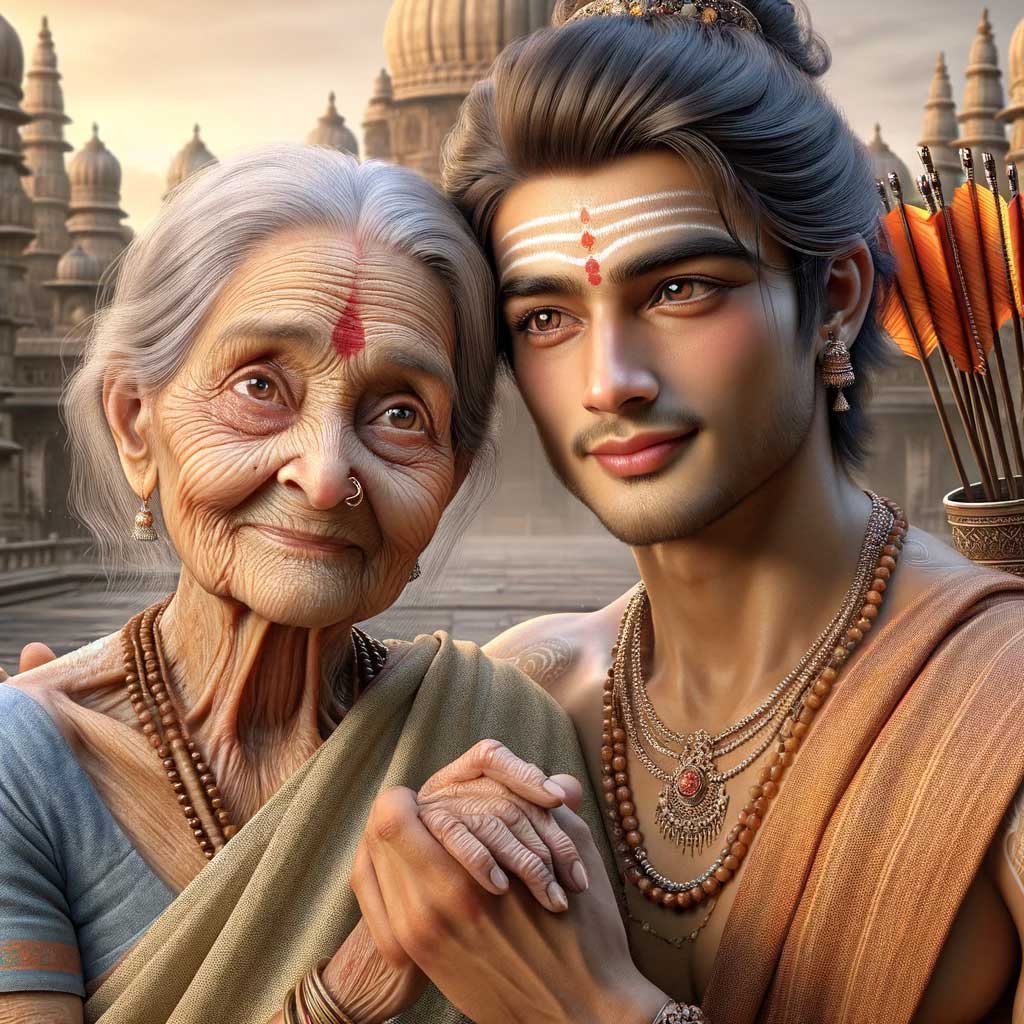 |
 Support Us
Support Us
Satyagraha was born from the heart of our land, with an undying aim to unveil the true essence of Bharat. It seeks to illuminate the hidden tales of our valiant freedom fighters and the rich chronicles that haven't yet sung their complete melody in the mainstream.
While platforms like NDTV and 'The Wire' effortlessly garner funds under the banner of safeguarding democracy, we at Satyagraha walk a different path. Our strength and resonance come from you. In this journey to weave a stronger Bharat, every little contribution amplifies our voice. Let's come together, contribute as you can, and champion the true spirit of our nation.
 |  |  |
| ICICI Bank of Satyaagrah | Razorpay Bank of Satyaagrah | PayPal Bank of Satyaagrah - For International Payments |
If all above doesn't work, then try the LINK below:
Please share the article on other platforms
DISCLAIMER: The author is solely responsible for the views expressed in this article. The author carries the responsibility for citing and/or licensing of images utilized within the text. The website also frequently uses non-commercial images for representational purposes only in line with the article. We are not responsible for the authenticity of such images. If some images have a copyright issue, we request the person/entity to contact us at This email address is being protected from spambots. You need JavaScript enabled to view it. and we will take the necessary actions to resolve the issue.
Related Articles
- Gandhi-scion Rahul Gandhi in London promotes anarchy, calls for “mass action” against the Indian state that has been captured: Mirrors Left's playbook, says 'necessary to free the institutions that are controlled by RSS'
- Mumbai ATS tortured and forced witness in the 2008 Malegaon blast case to falsely accuse Yogi Adityanath and RSS leaders
- "We cannot describe it. We cannot reveal it. And when we do, we disappear": RSS Chief's first-ever visit to mosque to the Kasturba Gandhi Marg mosque and meet with Muslim intellectuals comes amid outreach to minorities in the backdrop of Gyanvapi mosque
- Indian diaspora welcomed Modi in Berlin geared up in traditional attire, Dhol-Tasha celebration and proudly waving Bhagwa: Faces Hinduphobic vitriol and bombardment of trolling and criticism
- BJP IT Cell Chief Amit Malviya decisively sues RSS member Santanu Sinha for unfounded sexual harassment claims, boldly defending his reputation against allegations amplified by Congress's IT Cell Chief Supriya Srinate in a contentious press conference
- Why look for Shivling in every mosque: RSS chief Mohan Bhagwat on Gyanvapi says 'it is a matter of faith for Hindus, issue should be settled amicably', but advises against opening battles in every mosque
- Gruesome murder case of RSS leader SK Sreenivasan in Kerala: all 20 accused are linked to extremist Islamic organisation PFI or SDPI, assailants hacked him to death in Palakkad with sharp weapons
- In Nagpur's Dussehra speech, RSS Chief Mohan Bhagwat examines Bharat's progress and societal hurdles, champions unity, vigilance, and national pride, Shankar Mahadevan commends RSS for upholding the 'Akhand Bharat' ideology', says 'Salute You'
- K. Annamalai declares DMK and AIADMK as political adversaries, boldly forecasts BJP's ascendance in Tamil Nadu by 2026; amidst a politically charged environment, Rajinikanth emphasizes that his banter with Durai Murugan should not be seen as enmity
- "Politics - The land of embarrassment, breakfast and inauguration": Massive embarrassment faced by Kejriwal at GGSIPU East Delhi inauguration, AAP was claiming credit for this building where foundation was laid by Smriti Irani and inaugurated by LG Saxena
- ‘Personal belief and rights of anyone cannot be imposed on the country, India will run as per the Constitution and not Shariyat’: CM Yogi Adityanath warns the supporters of ‘ghazwa-e-hind’
- An old speech of PM Narendra Modi that gives goosebumps has gone viral on social media: A walk down memory lane when 30 years back PM Modi unfurled India’s tricolour flag at Lal Chowk in Srinagar during Ekta Yatra
- Assam: In another major electoral victory for Bharatiya Janata Party in Assam, party swept Karbi Anglong Autonomous Council (KAAC) elections winning all 26 seats, Congress scores zero for second time
- "Despair and frustration will not shake our belief that resistance is the only way of liberation": Sardar Amit Bhai to burn holes in Nizam Owaisi’s Empire by celebrating Hyderabad liberation day for one long year from Sept 2022 to Sept 2023
- "Those who make peaceful revolution impossible will make violent revolution inevitable": Eight militant groups of Assam sign a tripartite peace agreement with Govt in Delhi, Amit Shah says Assam’s territorial integrity assured, announces special package
















